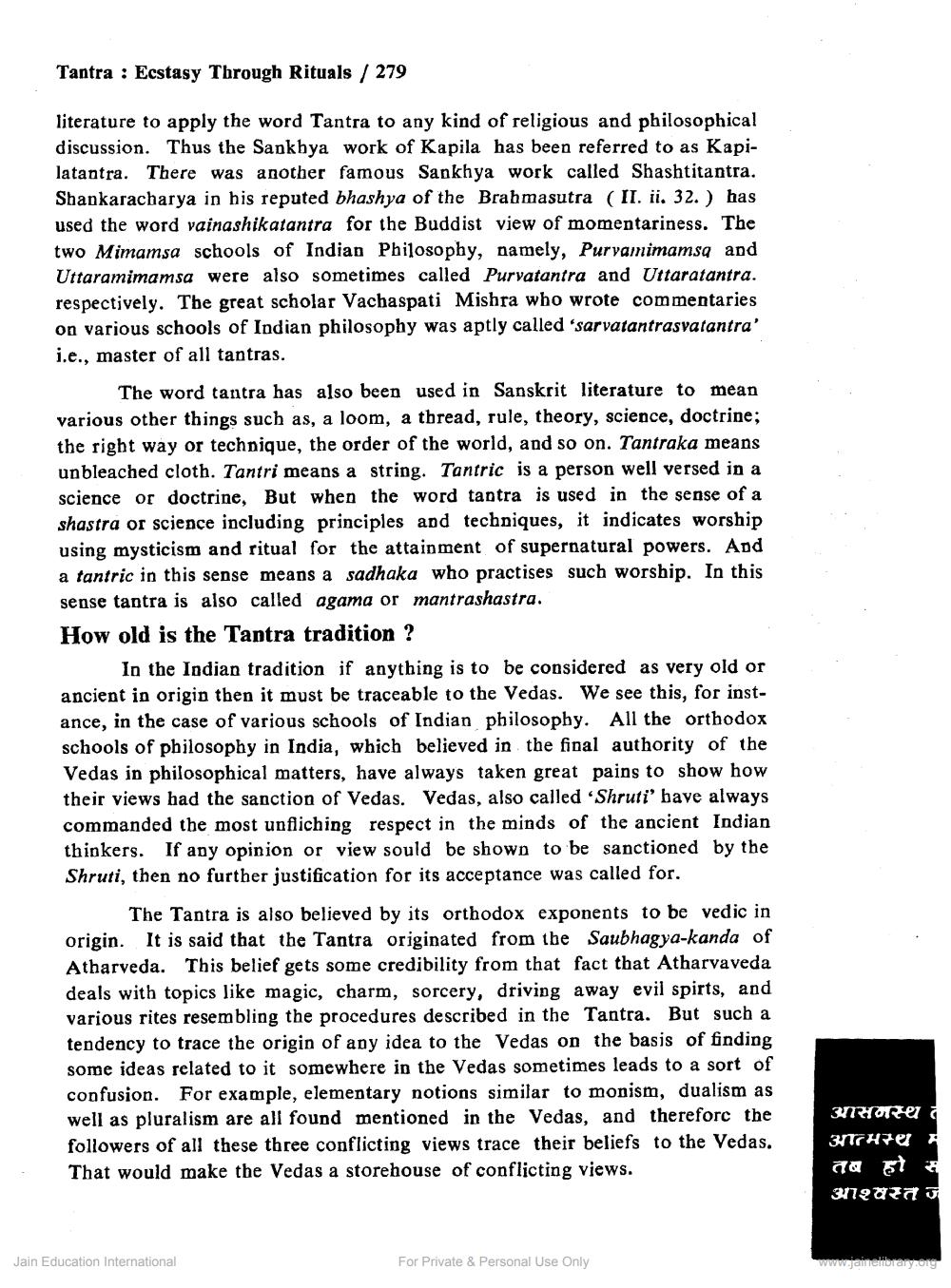Book Title: Tantra Ecstasy Through Rituals Author(s): Kalidas S Joshi Publisher: Z_Umravkunvarji_Diksha_Swarna_Jayanti_Smruti_Granth_012035.pdf View full book textPage 2
________________ Tantra : Ecstasy Through Rituals / 279 literature to apply the word Tantra to any kind of religious and philosophical discussion. Thus the Sankhya work of Kapila has been referred to as Kapilatantra. There was another famous Sankhya work called Shashtitantra. Shankaracharya in his reputed bhashya of the Brahmasutra (II. ii. 32. ) has used the word vainashikatantra for the Buddist view of momentariness. The two Mimamsa schools of Indian Philosophy, namely, Purvamimamsa and Uttaramimamsa were also sometimes called Purvatantra and Uttaratantra. respectively. The great scholar Vachaspati Mishra who wrote commentaries on various schools of Indian philosophy was aptly called 'sarvatantrasvatantra' i.e., master of all tantras. The word tantra has also been used in Sanskrit literature to mean various other things such as, a loom, a thread, rule, theory, science, doctrine; the right way or technique, the order of the world, and so on. Tantraka means unbleached cloth. Tantri means a string. Tantric is a person well versed in a science or doctrine, But when the word tantra is used in the sense of a shastra or science including principles and techniques, it indicates worship using mysticism and ritual for the attainment of supernatural powers. And a tantric in this sense means a sadhaka who practises such worship. In this sense tantra is also called agama or mantrashastra. How old is the Tantra tradition ? In the Indian tradition if anything is to be considered as very old or ancient in origin then it must be traceable to the Vedas. We see this, for instance, in the case of various schools of Indian philosophy. All the orthodox schools of philosophy in India, which believed in the final authority of the Vedas in philosophical matters, have always taken great pains to show how their views had the sanction of Vedas. Vedas, also called 'Shruti' have always commanded the most unfliching respect in the minds of the ancient Indian thinkers. If any opinion or view sould be shown to be sanctioned by the Shruti, then no further justification for its acceptance was called for. The Tantra is also believed by its orthodox exponents to be vedic in origin. It is said that the Tantra originated from the Saubhagya-kanda of Atharveda. This belief gets some credibility from that fact that Atharvaveda deals with topics like magic, charm, sorcery, driving away evil spirts, and various rites resembling the procedures described in the Tantra. But such a tendency to trace the origin of any idea to the Vedas on the basis of finding some ideas related to it somewhere in the Vedas sometimes leads to a sort of confusion. For example, elementary notions similar to monism, dualism as well as pluralism are all found mentioned in the Vedas, and therefore the followers of all these three conflicting views trace their beliefs to the Vedas. That would make the Vedas a storehouse of conflicting views. आसमस्थत 3ITCHIE तब हो स आश्वस्तज Jain Education International For Private & Personal Use Only www.janelibrary.orgPage Navigation
1 2 3 4 5 6 7 8 9 10 11 12 13
